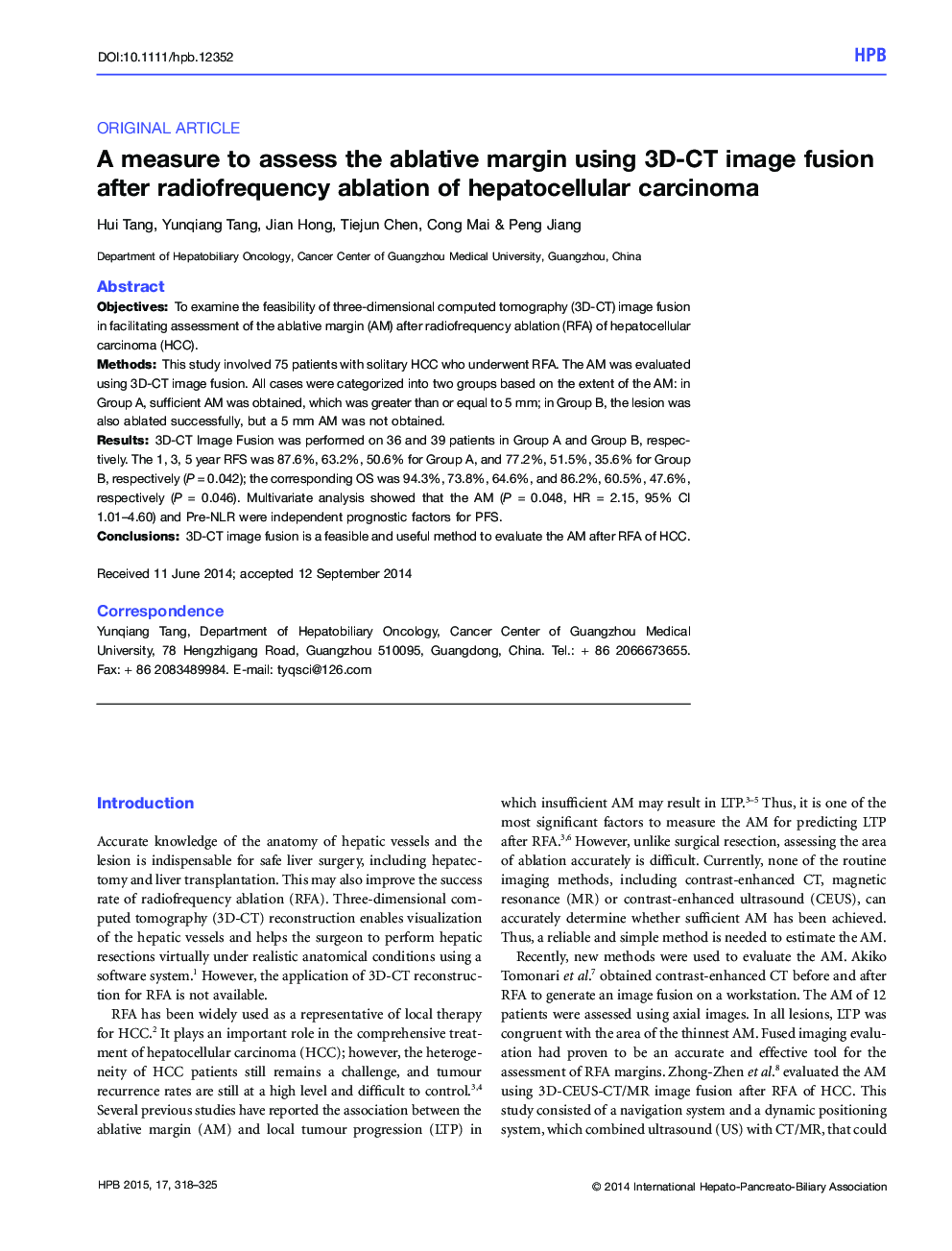| Article ID | Journal | Published Year | Pages | File Type |
|---|---|---|---|---|
| 3268721 | HPB | 2015 | 8 Pages |
ObjectivesTo examine the feasibility of three-dimensional computed tomography (3D-CT) image fusion in facilitating assessment of the ablative margin (AM) after radiofrequency ablation (RFA) of hepatocellular carcinoma (HCC).MethodsThis study involved 75 patients with solitary HCC who underwent RFA. The AM was evaluated using 3D-CT image fusion. All cases were categorized into two groups based on the extent of the AM: in Group A, sufficient AM was obtained, which was greater than or equal to 5 mm; in Group B, the lesion was also ablated successfully, but a 5 mm AM was not obtained.Results3D-CT Image Fusion was performed on 36 and 39 patients in Group A and Group B, respectively. The 1, 3, 5 year RFS was 87.6%, 63.2%, 50.6% for Group A, and 77.2%, 51.5%, 35.6% for Group B, respectively (P = 0.042); the corresponding OS was 94.3%, 73.8%, 64.6%, and 86.2%, 60.5%, 47.6%, respectively (P = 0.046). Multivariate analysis showed that the AM (P = 0.048, HR = 2.15, 95% CI 1.01–4.60) and Pre-NLR were independent prognostic factors for PFS.Conclusions3D-CT image fusion is a feasible and useful method to evaluate the AM after RFA of HCC.
